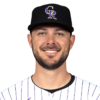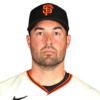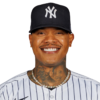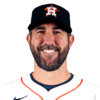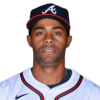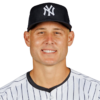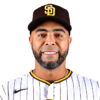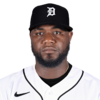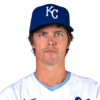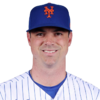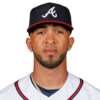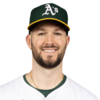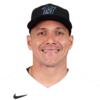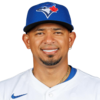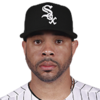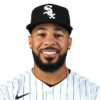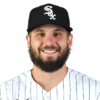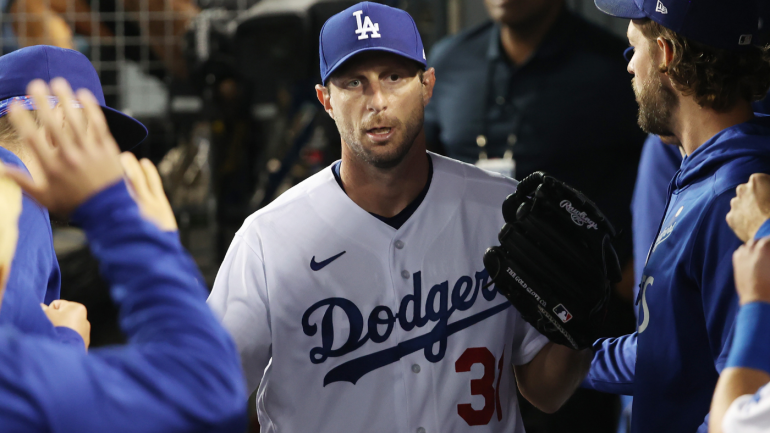
Major League Baseball's 2021 season culminated on Tuesday with Game 6 of the World Series. The Atlanta Braves will now plan their championship parade while the other 29 teams resort to outlining their offseason plans.
With so much uncertainty surrounding the collective bargaining agreement negotiations, it's possible that next Opening Day doesn't occur as scheduled. We're determined to not let that interfere with our typical winter coverage, however, which includes our annual free-agent rankings.
Below, you can find the initial version of those rankings. Do note that 1) the order is based on a combination of expected impact and annual average value; and 2) we'll be adding players whose options are declined as those moves are announced. This is, then, simply a snapshot of the free-agent class as it stands.
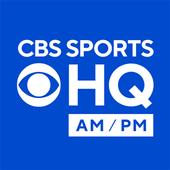
CBS Sports HQ Newsletter
Your Ultimate Guide to Every Day in Sports
We bring sports news that matters to your inbox, to help you stay informed and get a winning edge.
Thanks for signing up!
Keep an eye on your inbox.
Sorry!
There was an error processing your subscription.
As always, this is more of an art than a science. Keep that in mind before you yell at us.
| 1 |
Carlos Correa
Houston Astros SS
|
| Correa is such a talent that if he didn't exist a video-game player would have created him. He's a well-above-average hitter who walked and struck out at personal-best rates last season, and he did so while achieving maximum exit velocities that were on par with all-world sluggers like Juan Soto and Yordan Alvarez. Unlike Soto and Alvarez, two corner outfielders celebrated more for their work at the dish than in the grass, Correa is a highly proficient defensive shortstop with a big-time arm. He's constructed of flesh and bone, meaning there are negatives to consider. His attendance was spotty earlier in his career, and it's to be seen if he can maintain his high level of durability (he appeared in 92 percent of Houston's games in 2020-21) as he nears his 30s. He's also no longer a stolen-base threat, the way he was when he first broke into The Show. (He hasn't attempted one during the regular season since April 2019.) There's also the sign-stealing scandal. The George Springer precedent suggests Correa won't have a Poe-like moment this winter, his heart pounding like so many trash-can thuds as lower-than-expected offers pour in. Truthfully, even if teams had shown any inclination to punish Astros players in that manner, they might make an exception for Correa. He might just win an MVP Award someday and, per the authority of this list, is the best player available on the market. | |
| 2 |
Corey Seager
Los Angeles Dodgers SS
|
| Seager can really hit. He had the fourth-highest OPS+ among non-first-base infielders over the past two seasons, trailing only Fernando Tatis Jr., Trea Turner, and José Ramírez. He also ranked in the 80th percentile or better in 2021 in two important categories: 1) percentage of batted balls that had exit velocities above 95 mph, and 2) percentage of batted balls with a launch angle between 10 and 30 degrees. That he was able to post such numbers despite a trigger-happy approach (his swing rate was almost identical to Yermín Mercedes') is a testament to his feel for contact. If there are areas for reservation with Seager, they concern his past back woes and his long-term defensive position. He tends to struggle coming in on balls, and it's possible he'll have to slide to the hot corner sooner than later. The bat will play there. | |
| 3 |
Kris Bryant
San Francisco Giants 3B
|
| What is there to write about Bryant that hasn't been written before? He's a middle-of-the-order hitter who can play each of the corner spots (as well as some center field) and who carries himself like a face of the franchise. It's too bad that his legacy is going to be intertwined with the popularization (and, therefore, the normalization) of service-time manipulation. He deserves better. | |
| 4 |
Marcus Semien
Toronto Blue Jays 2B
|
| Here's a fun piece of trivia. No position player has accrued more Wins Above Replacement since the start of the 2019 season than Semien has, according to Baseball Reference's calculations. Now, no one is going to argue that he's the best player in baseball; what that tidbit means, though, is that he's had two of the best individual seasons the sport has seen over the last three years. Even Semien's forgettable 2020 campaign looks important in some aspects. He began to lift the ball more frequently then, a shift that paid off last season when he also started to pull the ball at a career-high rate. That marriage resulted in Semien hitting 45 home runs, the most ever in a single season by a second baseman. Teams might prefer to not give a lucrative multi-year contract to a 30-something second-bagger, but Semien has earned it. | |
| 5 |
Freddie Freeman
Atlanta Braves 1B
|
| It's hard to imagine the Braves allowing Freeman to leave. Still, we're including him for posterity's sake. Freeman is a sensational hitter who hasn't posted an OPS+ of less than 130 since he was a 22-year-old in 2012. He's also a mighty fine first baseman, and he's become a bastion of durability as of late: over the last four years, he's appeared in 539 of the Braves' 545 games (that's 98.9 percent, for those without access to a calculator). It's to be seen what kind of term Freeman seeks, but on paper he seems like someone who should age gracefully. | |
| 6 |
Robbie Ray
Toronto Blue Jays SP
|
| Ray just authored one of the most impressive turnaround stories in recent memory. He was abysmal in 2020 after altering his arm action, walking nearly a batter per inning and looking far more hittable than someone with his caliber of stuff should. He rebounded by upping his fastball usage rate and by challenging batters in the zone more, be it over the middle or on the inner half. Gosh, did that work out well. Ray threw a career-high amount of innings with the Blue Jays as part of the kind of special season that might win him a Cy Young Award. ( His main secondary pitches, his slider and curveball, are special in their own right .) His lack of a track record makes him a pure risk-reward signing: the risk is that he might not be this good again; the reward is that, if he is, he's going to provide oodles of surplus value on the contract he signs this winter. | |
| 7 |
Max Scherzer
Los Angeles Dodgers SP
|
| Scherzer would have ranked a touch higher prior to the "dead arm" issues he experienced during the postseason. Alas, we had no choice but to dock him without having a good feel for what, if anything, those woes will mean for him in the future. If Scherzer is right as rain, he's still one of the top pitchers in the majors thanks to his special blend of stuff and guile. Someone is likely going to pony up in order to add him to the front of their rotation. | |
| 8 |
Kevin Gausman
San Francisco Giants SP
|
| Gausman accepted the qualifying offer last winter after reestablishing himself as a bonafide starting pitcher with the Giants. He won't have to settle for another one-year deal this offseason, not after he went and had nearly the same season over a larger sample. Gausman's formula remained the same: mid-90s fastballs up, splitters (with seam-shifted wake) down. It worked just as well, with three-fourths of his per-nine rate statistics (hits, walks, and home runs) improving over the year prior. (His K rate went down by 1.3 per nine.) At this point, Gausman has more than 250 innings suggesting he's a legitimately above-average starter. It's time for his paycheck to match that. | |
| 9 |
Marcus Stroman
New York Mets SP
|
| Stroman showed no rust after opting out of the 2020 season. Instead, he started 33 times (matching a career-high) while posting his best quality-of-contact and whiff rate in years. Stroman seemingly made two adjustments. First, he started to pitch inside more frequently with an arsenal that drips with seam-shifted wake; second, he added a splitter, giving him another weapon to deploy versus lefties and righties alike. Stroman's split has a Gausmanian movement profile, though it doesn't have the utility to match just yet. (You figure he's a candidate to outpitch his projections if he improves in that respect.) The same old criticisms of Stroman's game still apply -- he's short; he doesn't strike out a ton; and so on -- but he's a fascinating pitcher, and one who should get paid based on his track record of being an above-average starter. | |
| 10 |
Starling Marte
Oakland Athletics CF
|
| Marte, who turned 33 in October, has now been a dynamic player for more than a decade. He can hit for average; he can get on base by virtue of being a hit-by-pitch magnet or (increasingly) by walking; he can deliver 40-plus extra-base hits; he can steal bases at volume and with efficiency; and, oh yeah, he can play a good outfield, especially in a corner. The only things Marte can't do are turn back the hands of time or guarantee that he won't miss time with a fractured bone because of one of those aforementioned hit-by-pitches. He's easily the best outfielder in the class. | |
| 11 |
Trevor Story
Colorado Rockies SS
|
| If you scroll through Story's Baseball Reference page, you'll click away thinking his offense underwhelmed while his defense remained rock solid in his walk year. The truth is the opposite. Story's topline results at the plate were his worst in years, but his underlying measures (exit velocity and launch-angle bins) aligned with his 2019-20 campaigns just fine. The area where decline was most evident with his game was in the field, particularly his arm . He made nearly as many throwing errors last season (11) as he did the previous two years combined (12). Perhaps the offseason will allow Story to rest his weary elbow, yet some teams may already view him as a second baseman. (Heck, one team was reportedly interested in making him a center fielder at the deadline.) Factor in the lingering concerns about his home/road splits (over the last three seasons his OPS was more than 200 points higher at Coors Field) and the bloated shortstop market, and he might end up serving as the winter's Marcus Semien, settling for a pillow contract before landing the mattress next year. | |
| 12 |
Chris Taylor
Los Angeles Dodgers CF
|
| Perhaps this is an overzealous ranking, but in our estimation there's a perfect syzygy in place for Taylor to get paid. He has his own track record of being an above-average hitter; he has a ton of positional versatility (at a time when teams are obsessing over such a thing); and he can draft off the success Enrique Hernández had last season in Boston. Taylor is a fit in virtually every team's lineup, and so there's even a chance for a few contenders to get into a bidding war in an effort to lure him away from Los Angeles. Again, this could prove to be a wee too high a ranking for him; we'll take our chances, though. | |
| 13 |
Javier Baez
New York Mets 2B
|
| Báez is a unique and brilliant player. His feel for the game and his sense for where he is on the diamond are nearly unmatched; they together empower him to accomplish feats, both on the basepaths and in the field, that most others wouldn't attempt. There's no questioning or denying those elements of his game, and that marriage makes him one of the era's most entertaining players. Where there's room for debate on Báez is in the batter's box. He has a hyper-aggressive approach that results in a ton of ill-conceived chases and whiffs. Báez has been able to flourish regardless, but it's fair to wonder how he'll perform with the diminished bat speed and barrel control that comes with age. One thing is for sure: Báez's improved walk rate with the Mets doesn't appear to be a sign of legitimate growth, as his swing and whiff rates were both nearly identical to the marks he posted earlier in the season with the Cubs. | |
| 14 |
Nick Castellanos
Cincinnati Reds RF
|
| Castellanos is a well-above-average hitter who has pole-to-pole power, an optimized launch angle, and a preference for hitting the ball back up the middle. For better and worse, that's the extent of his game. He isn't a good defender; he doesn't walk a ton; and he isn't a stolen-base threat. Castellanos can hit, though, and he's going to get a lucrative contract because of it. | |
| 15 | Seiya Suzuki, OF, Hiroshima Toyo Carp (Japan) |
| Seiya Suzuki is expected to be submitted through the posting system by the Hiroshima Carp once the Japan Series concludes in late November. He's a five-time All-Star in Nippon Professional Baseball with a career .315/.415/.571 slash line who boasts a well-rounded game. In addition to posting above-average exit velocities, he's walked more than he's struck out in two of the past three years. (In 2020, the exception, he finished with one fewer walk than strikeout.) Suzuki also has a high-grade arm that should allow him to make an impact on defense. The one blemish in his game is that he's not a particularly skilled basestealer. Teams will gladly overlook that. | |
| 16 |
Clayton Kershaw
Los Angeles Dodgers SP
|
| The word of this writeup is availability. It applies to Kershaw's free agency in two senses. Foremost, is he going to be impacted by the elbow injury that sidelined him for the postseason? Second, is he serious about leaving the Dodgers, the team whose hat he'll bear on his Hall of Fame plaque? If Kershaw is good to roll, both for Opening Day and out of Los Angeles, then he should have plenty of suitors. We'll add that while Kershaw's curveball gets all the attention, it was his slider that served as his primary pitch for the first time last season. That's something to watch for going forward. | |
| 17 |
Justin Verlander
Houston Astros SP
|
| Verlander has pitched in one game in the last two seasons because of Tommy John surgery. There's no telling what he's going to look like as a 39-year-old coming off a grueling rehab process. Based on his track record, though, it's fair to assume that some team will pay a pretty penny on a one-year contract to find out. | |
| 18 |
Noah Syndergaard
New York Mets SP
|
| Syndergaard hasn't pitched in a meaningful capacity since the pre-pandemic days, making him difficult to rank properly. In two appearances late last season, he showed diminished fastball velocity and didn't throw a single breaking ball. A normal winter should help Syndergaard get in a better place. A one-year deal seems likely. | |
| 19 |
Eduardo Rodriguez
Boston Red Sox SP
|
| Rodríguez, who missed the 2020 campaign after he developed myocarditis following his bout with COVID-19, returned in fine form last season. (He probably would've won the Comeback Player of the Award were it not for Trey Mancini's own inspirational tale.) He accrued the best strikeout-to-walk ratio of his career, in part by throwing a new personal best rate of strikes. Rodríguez also ranked near the top of the league in suppressing quality of contact for the third time in five years. He's not the best bet on the market to give a team 180 innings a season, but he's a legit mid-rotation starter and his next season with a below-average ERA+ will be his first. | |
| 20 |
Kenley Jansen
Los Angeles Dodgers RP
|
| You can make the case that Jansen isn't the most desirable closer on the market. He is, nevertheless, the most accomplished and (perhaps) the most consistent; that combination, in this author's estimation, will make him the most wealthy. Jansen has had more seasons with an ERA+ over 200 than he's had under 120; he's recorded at least 30 saves in seven consecutive full seasons; and he's likely to move into the top eight, if not the top seven on the all-time saves leaderboard next season. Two notes on his season that should encourage teams this winter: 1) his walk rate increased despite him still throwing a well-above-average rate of strikes, suggesting the former was a blip rather than a concern; and 2) he showed increased confidence in his slider, giving him another weapon to deploy as he deems it necessary. | |
| 21 |
Raisel Iglesias
Los Angeles Angels RP
|
| Iglesias had a phenomenal lone season with the Angels, amassing the fourth largest strikeout-minus-walk percentage in the majors (minimum 30 innings pitched). It's easy to focus on his mid-to-upper-90s fastball, but his slider and changeup are the keys to his success. Last season, they combined for a whiff rate around 50 percent. Most relievers would be happy to have one weapon so effective; he has two. (And that doesn't include his potent heater.) Expect Iglesias to slot in as some lucky team's closer as part of a multi-year pact. | |
| 22 |
Anthony Rizzo
New York Yankees 1B
|
| Rizzo's first foray into free agency should be interesting. Remove his name and his personality and there's a strong case to be made that this is overrating him. After all, he's a 32-year-old first baseman with back concerns whose OPS+ over the last two seasons is lower than that of Eric Hosmer's, Josh Bell's, and Jesùs Aguilar's. He's still a good first baseman with a strong feel for contact, but c'mon; nobody is pining for Casey Kotchman for a reason. Still, it's easier to talk yourself into Rizzo receiving a better payday than his recent marks suggest he should. Part of that is because of the aforementioned soft factors, and part of it is because teams might look at his ball-tracking metrics and say, huh, these aren't that different from Yuli Gurriel's (who just hit .319/.383/.462 for a pennant winner). Who knows, maybe Rizzo does have another big season left. It's probably unwise to bet large chunks of money on it happening, but this ranking is justified if just one team is willing to take that plunge. | |
| 23 |
Michael Conforto
New York Mets RF
|
| There may not be a good time for a player to have an underwhelming season, but there is a bad time. Conforto learned that lesson the hard way by hitting .202/.341/.298 in the first half of his walk year. Though he rebounded to an extent in the second half (.252/.347/.445), his chances of cashing in this winter were already dashed. Conforto, it turns out, may disagree with that assessment. He appeared to be an obvious candidate to accept the qualifying offer, but a report from last month indicated that he intended to decline and seek out something better on the open market. Good luck. | |
| 24 |
Jon Gray
Colorado Rockies SP
|
| It's appropriate that Gray hunts ghosts as a hobby; his career has been haunted by speculative estimates of how much better he would be if he pitched for a different organization and in a different ballpark. (Gray, to his credit, hasn't moped about the assignment in front of him: he has a better career ERA and strikeout-to-walk ratio at Coors.) He'll get his chance to settle the debate this winter. Gray doesn't throw as hard as he used to, but he can still pitch in the mid-90s. His gyro slider is a capable bat-misser, and it's possible he leans into using his curveball more frequently if and when he rids himself of having to pitch in a high-altitude setting. Maybe Gray will never turn into Diet Noah Syndergaard, but he's an intriguing mid-rotation option. | |
| 25 |
Brandon Belt
San Francisco Giants 1B
|
| Belt's season was more confusing than dancing to "Desolation Row ." His batting line was stellar, with him hitting .274/.378/.597 with 29 home runs in 97 games. Fantastic, right? Except some of the finer points of his season point toward his decline. For starters, he suffered one of the largest drops in the majors in year-to-year in-zone contact rate, which fueled an increase in his strikeout percentage. He was also highly ineffective against velocity. On pitches that were at least 94 mph, he recorded an 82-mph exit velocity and a 36 percent whiff rate; his worst marks in the previous three seasons had been 85-mph and 26 percent. Belt still showed a disciplined approach and a good feel for making hard and well-launched contact overall, but as he nears his age-34 season it's fair to wonder if time is starting to surround him like an ocean. | |
| 26 |
Kyle Schwarber
Boston Red Sox LF
|
| Schwarber is certain to forego his mutual option in favor of again hitting the open market. Unlike last winter, when he was non-tendered by the Cubs, he's entering the open market on the heels of a fantastic season. He split the year between D.C. and Boston, batting .266/.374/.554 with 32 home runs. Schwarber's offensive game remains predicated on hitting the ball hard and taking walks, and nothing much has changed in that respect. Defensively, he made his first nine career starts at first base. It went about as you'd expect, with Schwaber looking inexperienced to the point where he was, at times, a threat unto himself with his footwork . ( On other, less concerning occasions, he resembled a bear trying to snag a leaping trout .) Schwarber should improve at the cold corner with a full offseason and spring of training. Let's be honest: no one is signing him because of his glove, anyway. | |
| 27 |
Nelson Cruz
Tampa Bay Rays DH
|
| How much longer can Cruz, who'll turn 42 years old next July, remain a viable middle-of-the-order bat? His stint with the Rays, during which he had only a 103 OPS+, appeared to show hints of slippage. Yet his ball-tracking metrics were, by and large, identical to the ones he posted with the Twins, with whom he had a 148 OPS+. Cruz doesn't offer anything in terms of secondary value, and his advanced age will cause every slump to be viewed with greater suspicion. For now, though, it seems like the answer to the introductory question is "at least another year." | |
| 28 |
Mark Canha
Oakland Athletics LF
|
| Canha has seldom gotten his due for being a quality player and an outstanding Rule 5 pick. Part of that is the warp and woof of playing in Oakland, part of it is because of the nature of his skill set. (Bill James once theorized that players who contribute in many areas tend to be underrated compared to those who excel in one area.) It's disappointing, then, that Canha's first chance at national prominence comes after a miserable second half. In his final 67 games, he hit just .206/.340/.319 with launch angle and exit velocity figures that each flatlined. There's a reasonable explanation for his struggles: he missed close to a month with a hip injury; presumably either he returned too soon or the injury had more impact than initially believed. Whatever the case, Canha's multi-positional ability and feel for getting on base should make him appealing to any and every contender. His age (he'll turn 33 in camp) was always going to limit his term, so bidding could come down to dollars and opportunity. | |
| 29 |
Corey Kluber
New York Yankees SP
|
| Kluber isn't what he once was, back when he was a perpetual quality start machine, but there's enough of him remaining to land another one-year deal as a micromanaged mid-rotation starter. He made two arsenal tweaks last season to beat back the effects of aging and injuries: one, elevating his curveball to serve as his primary pitch; and two, increasing his changeup to its highest usage rate (14 percent) since his first full season in The Show. Those two offerings happened to be his best-performing pitches, so he might want to lean into them even more next year. | |
| 30 |
Steven Matz
Toronto Blue Jays SP
|
| You would have expected Matz to make tangible changes given his year-to-year transformation, from surrendering more than a run per inning to having one of the best seasons of his career, and given that he was traded from the Mets organization to the Blue Jays. He didn't. He threw as hard as he did; he threw the same pitches around the same frequencies with the same mechanics; heck, he actually missed fewer bats with his sinker and changeup. The biggest difference, as best as can be discerned from here, is that his home-run rate regressed from an unsightly 4.1 per nine to a digestible 1.1 per nine. Perhaps the lack of perceptible tweaks comes across as a bad thing, but it doesn't have to be; teams should be heartened that Matz is what he's been for years: a mid-rotation starter who, as with the lot of us, is at the mercy of the universe. | |
| 31 |
Carlos Rodon
Chicago White Sox SP
|
| Rodón bet on himself last winter after he was non-tendered by the White Sox. Despite coming off a run of injury-ravaged and otherwise disappointing seasons, he refused to consider offers from teams who intended to use him in the bullpen. Rodón's stubbornness paid off. He returned to the White Sox rotation throwing harder and with better control than he had exhibited in 2020. He subsequently enjoyed his finest season to date, as well as his first All-Star nod. Rodón's fatigue issues late in the year may limit his market, but he won't have to worry about the bullpen anytime soon. | |
| 32 |
Michael Pineda
Minnesota Twins SP
|
| Pineda required three injured list stints last season, including one for right elbow inflammation and another for a strained oblique. He hasn't started 30 games or more in a single season since 2016. Though you don't know how much of him you're going to get, you do know what he'll deliver when he's available as his game is mostly untouched. Pineda has lost some velocity (he was down to 90 mph in 2021) and he remains home-run prone, but his gyro slider remains his most effective offering and he still fills up the strike zone. It's probably safest to peg him as a back-end starter heading forward. Another short-term deal, either a year or two in length, seems likely. | |
| 33 |
Zack Greinke
Houston Astros SP
|
| It's unclear if Greinke, who recently celebrated his 38th birthday, intends to continue his playing career. If he does, he should have no problem finding a spot near the back of a contender's rotation where he can throw strikes and mix speeds to his heart's content. Who knows, maybe he'll even locate a suitor willing to give him his long-desired crack at becoming a shortstop . (We're kidding; we think.) | |
| 34 |
Corey Knebel
Los Angeles Dodgers RP
|
| Knebel's sales pitch is so obvious that it's deliverable in a tweet-sized message: He has big stuff, a mid-to-upper 90s carrying fastball and a wicked curve, as well as ample experience in every role that can be assigned to a modern reliever: closer, setup man, and even opener. | |
| 35 |
Collin McHugh
Tampa Bay Rays RP
|
| It's a given: if McHugh is healthy, then he's going to pitch well. To wit, last season marked the second time in his last three attempts (he didn't pitch in 2020) that he posted a sub-2.00 ERA and a strikeout-to-walk ratio exceeding 4.00. McHugh cranked up his slider usage over 50 percent for the first time and he added a fair amount of extension to his delivery. That combination resulted in a career-best whiff rate and a career-low home-run rate. Some regression will come for the latter, but he should still receive a multi-year deal to slot into a high-leverage role for a contender. | |
| 36 |
Danny Duffy
Los Angeles Dodgers SP
|
| Duffy is a wild card in more ways than one. He didn't pitch after July 16 because of a left flexor strain. That same injury had sidelined him earlier in 2021, and this time it wiped out the rest of his season, preventing him from making an official appearance with the Dodgers following a deadline trade. Duffy is both younger (nearing 33) and better (105 ERA+ since 2018) than most would expect. His fastball fits the modern parameters, in that he gets deep extension on it and induces good vertical break. An adventurous club might sign him with an eye on tweaking his pitch mix to optimize his performance. At minimum, he has experience in both the rotation and the bullpen and could prove to be a value addition if his arm holds up heading forward. | |
| 37 |
Brooks Raley
Houston Astros RP
|
| In a different era, one not far removed from the present, Raley would be on his way back overseas after posting an unsightly 4.83 ERA in 79 appearances the last two seasons. In this era, though, he's likely going to sign a multi-year deal to pitch in high-leverage situations. Hidden behind the bloated ERA is the fact that he's led the majors in average exit velocity allowed in each of the last two seasons. In addition to being an elite contact manager, Raley has proven he's capable of throwing strikes and missing bats with a cutter and a sweeping slider that had the third-most horizontal break among lefties. He's not the most marquee name on the market, but he should be a nifty addition for a team unmoved by the numbers on his baseball card. | |
| 38 |
Kyle Seager
Seattle Mariners 3B
|
| As we noted in the introduction, we didn't include players with option clauses unless we were confident about the outcome. We were always comfortable with Seager, who, for whatever reason, fell out of favor with Seattle's front office despite being one of the franchise's biggest wins and best players for the past decade. Oh well. It's easy to envision a team signing Seager with the hope he provides a league-average season. That might work out, but there are legitimate reasons to have concern about him cratering. Seager's strikeout rate ballooned last season to a career-worst 24 percent, in no small part because he suffered one of the biggest year-to-year declines on his in-zone contact rate. He set a new career-high in home runs, yet his average exit velocity was worse than in previous seasons; add in his increased dependence on pulling the ball, and it's easy to paint a mental portrait of a player who has to cheat to hit the heat. There's also the matter of how he's become almost unplayable against lefties. Maybe this proves to be too skeptical of a read on Seager as he enters his age-34 season, but he's a lot riskier than he appears from a surface-level perspective. | |
| 39 |
Jorge Soler
Atlanta Braves RF
|
| Sometimes, baseball makes no sense. When Soler was traded to the Braves at the deadline, he was hitting .192/.288/.370 with 13 home runs in 94 games. His ball-tracking metrics indicated better times were ahead. Sure enough, they were. He batted .269/.358/.524 the rest of the way, even launching 14 homers in his final 55 contests. Here's the catch: his exit velocity with the Braves was nearly three ticks lower than it had been with the Royals. Go figure. Soler remains a poor defensive outfielder who should be used as a DH as frequently as possible. One development with his game worth monitoring: he cut into both his strikeout and whiff rates. Even if those gains prove unsustainable, his walking and bopping will keep him in the lineup. | |
| 40 |
Eddie Rosario
Atlanta Braves LF
|
| Rosario's postseason heroics boosted his popularity among Georgia residents. How about with general managers? We're skeptical. Rosario, who was non-tendered by the Twins last winter, is a limited player. He doesn't walk; he isn't a good defender; and he shouldn't be used whenever a left-hander is on the mound. Rosario can put a bat on the ball, and he provides thump against right-handed pitching. Those skills have and will make him a fine platoon starter for whatever team employs him next, but that's all he is or will be for them, even if he's forever recalled as something more in Atlanta. | |
| 41 |
Alex Wood
San Francisco Giants SP
|
| Wood's 2019-20 seasons appear as forgettable as his 16 combined outings were sparse. An important development occurred in the fog of the pandemic, however, as he began to throw a slider in place of his curve. That decision looks like a winner. Wood's slider pairs well with his sinker and changeup, partially because it mirrors their spin. An appetite for pitch design isn't required to appreciate that opponents hit .184 against the slider with a 40 percent whiff rate, making it an effective offering. If Wood can stay healthy, he should be able to sink and slide his way into another above-average season; this time, perhaps, after signing a multi-year contract. | |
| 42 |
Anthony DeSclafani
San Francisco Giants SP
|
| We were higher on DeSclafani last winter than we had right to be after a disastrous 2020 season that saw him allow 27 runs in 33 innings. Yet even we didn't envision him posting a 129 ERA+ and making 29 starts for the best team in the majors. What we did foresee was DeSclafani cranking up his slider usage, to the extent that it was his primary pitch for the first time in his career. It's unclear if teams will buy in to the extent that he nets a multi-year contract. Given where he was a year ago, that's OK. | |
| 43 |
Yusei Kikuchi
Seattle Mariners SP
|
| Kikuchi had a labyrinthine contract that called for different terms and pay scales based on whether or not the Mariners exercised their portion of an option. When they declined to do so, he opted out of what amounted to a one-year deal worth $13 million to seek greener pastures. He should make for an interesting target for teams willing to tinker with his pitch mix. Kikuchi has a mid-90s fastball that plays quicker because of his deep release point; a slider that mirrors the heater's spin; and a couple of other pitches, including a low-90s cutter that served as his primary offering versus left-handed batters. Agent Scott Boras tends to know what he's doing, so we assume he'll find comparable money to what he walked away from. | |
| 44 |
Avisail Garcia
Milwaukee Brewers RF
|
| There's something comforting about García's career. Every few seasons, he has an above-average year at the plate that causes you to inquire as to whether he's figured it all out. Then you take a look and you find that the answer is no. García has always had problems with his approach and his inability to consistently lift the ball, thereby wasting his natural raw strength. Nothing has changed on that front. He still swings (and misses) a lot, and his exit velocity and launch angle breakdowns last season were in line with what he's done since 2016. He's been a (slightly) above-average hitter during that timespan on the aggregate, fluctuating between good and bad years. That's probably a reasonable expectation for the future, too. | |
| 45 |
Eduardo Escobar
Milwaukee Brewers 3B
|
| Escobar made his first All-Star Game last summer, but he tends to fly under the radar as a no-frills two-to-three-win player. He's a nominal switch-hitter who does most of his damage against lefties. He's also a versatile defender whose best position is probably second base. He'll celebrate 33 years of life come January, suggesting he's not going to get a long-term deal. Still, Escobar ought to pop 20-something homers and provide some lineup coverage for someone next year on a short-term pact. | |
| 46 |
Tommy Pham
San Diego Padres LF
|
| It would be reasonable to scoff at Pham's inclusion. Not only is he a couple of years removed from his last big showing at the plate, he's now nearing his age-34 season. Concluding that he's just a league-average hitter nowadays would be sensible. The counterargument is that Pham still commands the strike zone, and that he proved last season he can still hit the ball hard and on a line. Indeed, 32 percent of his batted balls had a launch angle between 10 and 30 degrees; additionally, 48 percent of his batted balls had an exit velocity of at least 95 mph. Here are some players who had similar breakdowns, along with their seasonal OPS+: Freddie Freeman (133), Max Muncy (138), Ketel Marte (143), Corey Seager (145), Brandon Belt (160); you get the point. Pham probably won't deliver a season as good as any of those hitters did, but there's enough underpinning there to justify counting on him as an above-average hitter. | |
| 47 |
Leury Garcia
Chicago White Sox 2B
|
| Most contenders will seek their own Enrique Hernández this offseason. García isn't that, even if he should still be a useful bench piece. That may sound unfair given he had respectable offensive numbers in 2021, but there's ample reason to bet against him maintaining such production. He's a swing-happy front-foot hitter who benefited from 12 "soft hits" (more than he had combined from 2015-20) and an improved walk rate that was unsupported by his plate-discipline tendencies. García does provide value in the form of his speed and his versatile defense, making him a useful bench piece who can get starts against right-handed pitching; he just isn't likely to take nearly 500 plate appearances as part of a division-winning team again. | |
| 48 |
Joe Kelly
Los Angeles Dodgers RP
|
| Life, at least the form of it experienced in the flesh, is seldom fair. Kelly had perhaps the best full season of his career in 2021, but the Dodgers still declined his club option after it was revealed he might miss the start of next year. We're including Kelly anyway because surely someone will take the gamble. He's thrown at least 64 percent strikes in two of the past three years, and last season he had three pitches with usage rates over 10 percent and opponent averages under .180. Even if Kelly misses a little time, he could prove to be a value pick-up. | |
| 49 |
Joc Pederson
Atlanta Braves RF
|
| Pederson is at the point in his career where teams rely on him for two purposes: 1) crushing right-handed pitching, and 2) providing the clubhouse with laughs. He's the contemporary Jonny Gomes, albeit as a lefty. The catch is that Pederson hasn't offered much of the first, more important part of the equation the past couple seasons. Indeed, he's hit just .217/.292/.427 when he's had the platoon advantage since the start of 2020; for comparison, Atlanta teammate and fellow free-agent outfielder Eddie Rosario has hit .249/.309/.492 against righties during that same span. Pederson is on here because his exit velocity and launch-angle breakdowns were closer to what he posted in 2018-19, when he batted .256/.344/.564 against right-handed pitching. Of course, another dismal showing will land him in the non-roster invitee pile, no matter what those underlying indicators suggest about his performance. | |
| 50 |
Kendall Graveman
Houston Astros RP
|
| The short version of Graveman's backstory is that he was a decent starter who got hurt and then transitioned to the bullpen, where he authored a tremendous 2021. What might get lost on people is that the late stages of his pop-up season featured an unusual development. He went from not throwing a curveball all year to dusting it off and using it as his No. 2 offering (behind his trademark sinker). It's unclear why Graveman made the move, as messing with what works is often ill-advised in baseball circles. It's also unclear if he intends to continue using the curve heading forward; though the pitch had a phenomenal whiff rate in a small sample, its movement profile did not stand out one way or the other. Teams should do their own research before pursuing him. | |





